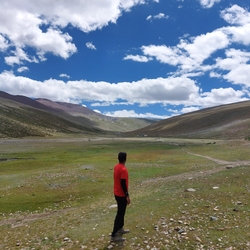In the world of water sports, kayaking is a mystery box filled with facts and stories. Curious beginners surf through different blogs and articles to know more about the itinerary and the techniques taught in kayaking courses. While researching this activity's specifics, it is also essential to know other details like myths, tips, and trivia. Read this article and get ready to unbox some fascinating perspectives about kayaking. Let’s bust some myths, learn some facts, and have lots of fun.

MYTHS:
1) Swimming is a must for kayaking
The biggest myth and the primary concern for beginners is swimming. But, to know how to swim is not necessary for kayaking. Every kayaker wears a personal floatation device or what is more commonly known as a life jacket. Even if a person rolls over and falls into the water, they will float and not drown. But swimming is a life skill, and it will help you be confident in any form of water. The bottom line is, swimming is a ‘good-to-have’ skill for kayaking and not a ‘must-have’ as it is often times believed to be.
2) Kayaking is a dangerous sport
Kayaking may be an extreme sport, but it’s not dangerous. There are several options to choose from like recreational kayaking, kayak-fishing, white water kayaking, etc. You start off at your level. In the initial stages, instructors won’t take you to tough zones until you gain confidence and the necessary skillset. To be ready for extreme zones is a gradual process spread across many years of practice – but it is not the ultimate goal of every kayaker to get there, and neither should it be. Like every sport, kayaking is about challenging yourself to explore new things and have some fun in the process – don’t think too far ahead – one stroke at a time is all there is to it.
3) Kayaks are flimsy and unstable
Kayaks are safe to use, and they don’t sink easily. They are distinctly designed with sturdy waterproof materials to keep you afloat on water. Kayaking is all about the act of balancing. After learning and practicing the basic strokes and techniques, anyone can easily handle a kayak on the water.
4) We need biceps and triceps to paddle
The funny misconception about kayaking is people believe it takes a lot of upper body strength to paddle. The truth is, a standard fitness level is all we need. It requires a sound coordination between the lower and upper body. So, don’t just concentrate on your arms and shoulders. Basic strength training and simple exercises are enough.
5) Kayaking is very expensive
Owning a kayak is extremely expensive. But, learning the activity is reasonably affordable. In India, the basic kayaking course does not cost more than 10,000 to 15,000 INR, depending on the activity like white water and sea. The adventure organizations will provide you with everything from a kayak to the clothing and gears required.
6) It is hard to get out of a kayak from underwater
Firstly, you will never get stuck inside a kayak when you flip over. Secondly, you can easily come out within seconds. The spray deck which conceals the cockpit may appear to lock your lower body. Its function is to keep the water from coming in. You can easily detach it with a simple pull and immediately come out of the kayak.

Interesting Facts:
1) Kayak, the word originated from the Greenlandic term Qajaq. It’s commonly known as a hunters’ boat. Ancient Eskimos created this special craft to sail on remote waters for hunting.
2) Kayaks were initially made from the skin of whales, animal bones, and driftwood. After several years of evolution, the modern-day kayaks are made of lightweight and tough materials like kevlar, polyethylene, and fiber.
3) Worldwide, kayaks are used for different purposes like fishing, transportation, and exploring new waters.
4) In 1936, kayaking was officially added as a competitive sport in the Olympics.
5) Oscar Spek, a legendary German adventurer, traveled from Germany to Australia in a kayak in a span of 7 years.
6) In the mid-1800s, the Europeans introduced kayaks for sports.
7) Kayaks come in different sizes depending upon their purpose.
8) Kayaking is considered one of the best outdoor activities for fitness and stress relief.
9) Modern-day kayaking techniques like rolls and spins were adapted from the survival and hunting techniques of Eskimos.
10) US Marines use two-person kayaks for war purposes.

SOME TIPS AND TRIVIA
1) The 5 things to remember
Regardless of which form of kayaking you choose or what type of water you get into, always remember to carry these 5 things with you.
1) Helmet
2) Life jacket
3) Spray deck
4) Paddle
5) Kayak
If it’s hard to remember, you can classify it as 3 things you wear (helmet, life jacket & spray deck) and 2 things you carry (paddle and kayak).
2) Swimming
In the lingo of kayakers, it has two meanings. One is to casually swim without the kayak, and the other refers to falling out of a kayak. If a pro kayaker falls over and exits his kayak, you notice him saying – I swam today.
3) Types of waves
White-water rivers are composed of several wild waves which are classified as follows:
a) Standing wave: A simple wave that erupts vertically
b) Rotating wave: The endpoint of the wave curve
c) Breaking wave: This is the wave a kayaker should avoid or pierce by paddling fast.When the sheer force of the water crashes, the wave erupts and breaks with splashes.
4) Leaning
Leaning is a very simple and straightforward technique used in kayaking to balance the flow and force of a kayak. While riding on rapids, leaning forward helps maintain the balance and move ahead efficiently. The same principle works on back paddling. The only time a kayaker leans backward while going forward is when they land the kayak on the shore. Leaning back while flowing on the shallow waters gives an extra push to pierce the front part of the kayak on the sand.
5) River features
Kayakers determine the route map of a river by reading its features. A wave trail is set according to nature, topography, and water flow. Here are a few basic features you should know:
a) Eddy current: An eddy current is an upstream flow or the reverse flow of water that goes opposite the main river flow. This happens when the mainstream of water hits a huge rock and turns back as a current.
b) Eddyline: The line that separates the main water stream and the eddy current is known as the eddy line. Kayakers use the eddy current to turn their kayak from the main flow.
c) Rocks: There are no rivers without rocks. Some are small, some are big, some are flat, and some are thin. Rocks are responsible for the creation of the white waters. When massive torrents hit solid rocks, it breaks the flow creating water currents that crash with each other with foams and splashes.
d) Rapids: Rapids are sections where the water flows incredibly fast. In kayaking, they are classified according to their intensity. Beginners are trained in class 2 rapids while pro kayakers train in class 5 and above.
e) Holes: Holes are an interesting feature of a river. When the water flow pours over a rock, the water swirls and coils to create a layer of foam. These holes can be in a straight line or look like a smiley depending upon the size of a rock.

6) Sign language
Pro kayakers mainly use sign language on river expeditions. It’s not easy to communicate on expeditions, especially when a teammate is far behind. So, the lead kayaker conveys his message using hand signs and paddle:
a) Paddle pointed towards the right: Paddle towards the right-hand side of the river
b) Paddle pointed towards left: Paddle towards the left-hand side of the river
c) Paddle pointed upwards: Follow the centerline
d) Right arm raised with a closed fist without a paddle: Stop
e) Crossed arms raised without a paddle: Call for an emergency
7) How not to panic underwater
Panicking is a psychological game. When beginners roll over and go underwater, they are immediately struck with the fear of getting stuck and drowning. A kayak is a friendly boat that can keep you safe, and it’s easy to handle. You can quickly release yourself within seconds and come out from under it. You will also be wearing a personal floating device, which will never let you sink. The best way to control panic is to start counting. Counting helps channel your thought process and also helps bring you back to your senses.
8) Some video content on kayaking that you can watch
a) The river runner: A famous documentary about the first man who paddled through the four great rivers that flow from Mount Kailash (Netflix)
b) The All India Kayak Expedition: A web series on 6 kayakers exploring the waters of India (YouTube)
c) Senders: YouTube channel with action-packed videos of kayaking
d) Congo - The Grand Inga Project: A documentary based on an elite team led by the famous kayaker Steve Fisher. (Vimeo & Red Bull TV)

Fascinating, isn’t it? We hope that the above information quenched your curiosity. Kayaking is more fun when you try it, and it is an individual sport that gives you a complete sense of satisfaction.
Are you wondering where to start?
At Bikat Adventures, we provide a 3-day Basic Kayaking Course for Beginners on the olive-green glacial waters of river Ganga in Rishikesh. It is a certified course. While you might get all the information you need on our website, if you have any queries, please do not hesitate to reach out to us.






